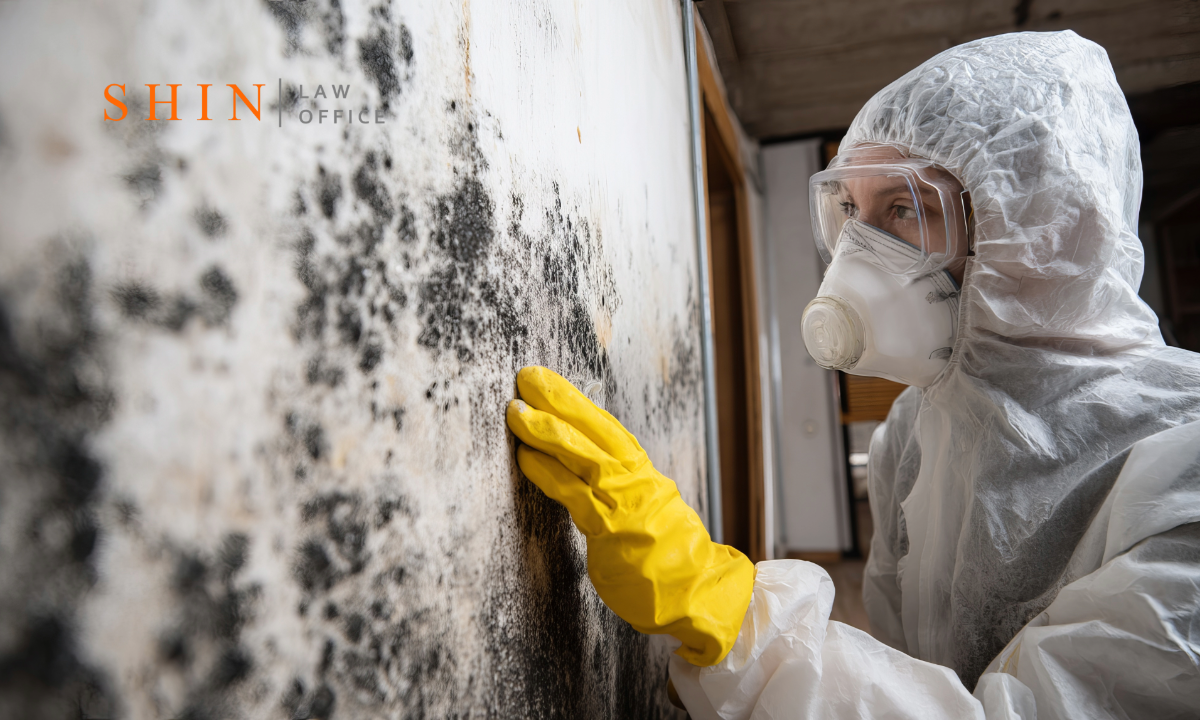By Anthony I. Shin, Esq. | Attorney at Law | Toxic Torts | Shin Law Office
When the Workplace Becomes a Health Hazard
As an attorney handling toxic tort cases in Northern Virginia, I have seen how invisible dangers can turn professional spaces into health hazards. Mold contamination in Ballston’s commercial buildings is one of those hidden threats that few employers recognize until employees start getting sick. Modern office spaces with sealed windows and advanced HVAC systems are designed for energy efficiency, but when moisture enters the system or ventilation fails, mold can grow quickly and quietly. The result is air filled with spores that circulate through every floor, causing respiratory issues, fatigue, and even long-term illness.
Mold-related workplace illnesses are not simply an inconvenience; they are a violation of employee safety standards. Employers have a legal duty to provide a healthy work environment, and failure to address mold contamination may constitute negligence or even an Occupational Safety and Health Administration (OSHA) violation.
How Mold Develops in Ballston Office Buildings
Common Sources of Mold Contamination
Many office buildings in Ballston have complex HVAC systems that run continuously throughout the year. When filters are not changed, drain pans overflow, or insulation becomes damp, mold begins to grow inside ducts and ventilation units. Water leaks from restrooms, ceiling tiles, or poorly sealed windows also contribute to these conditions.
The Role of Poor Maintenance
Even the most modern commercial properties can fall victim to mold if regular maintenance is ignored. Property management companies and landlords have a responsibility to conduct routine inspections and promptly repair leaks. When these steps are skipped, spores can spread through air systems, contaminating entire workspaces.
Recognizing the Warning Signs
Symptoms of Workplace Mold Exposure
Employees often notice early symptoms before management acknowledges a problem. Common warning signs include:
- Persistent coughing or throat irritation
- Headaches and dizziness
- Sinus pressure or nasal congestion
- Unexplained fatigue or skin irritation
- Worsening asthma or allergy flare-ups
If several employees experience similar symptoms, it is often a clear indicator of poor indoor air quality caused by mold growth.
Physical Clues in the Office
Musty odors, discolored ceiling tiles, or condensation around vents can all signal mold contamination. If these conditions are present, it is important to document them immediately and report the issue to management or building maintenance.
Employer Responsibilities Under OSHA and Virginia Law
Maintaining Safe Indoor Air Quality
Employers are required under OSHA’s General Duty Clause to provide a workplace that is free from recognized hazards that could cause serious physical harm. Mold contamination qualifies as such a hazard when it threatens employee health. Employers who fail to act after being notified of mold conditions may face enforcement actions and penalties.
Addressing Employee Complaints
When an employee reports mold-related health concerns, an employer should respond promptly by arranging an inspection, hiring an environmental testing firm, and, if necessary, performing remediation. Ignoring or retaliating against employees for raising safety concerns is unlawful.
Your Rights as an Employee
Filing a Complaint or Claim
If you believe your illness is related to mold exposure at work, you have the right to report it to OSHA or the Virginia Department of Labor. In addition, you may be entitled to compensation under workers’ compensation laws if you can show that your condition was caused or worsened by your workplace environment.
When Legal Action Becomes Necessary
If your employer refuses to investigate or attempts to conceal the problem, it may be time to pursue a toxic tort or negligence claim. These cases can help employees recover damages for medical costs, lost wages, and emotional distress. They can also hold employers accountable for failing to meet their legal obligations to provide safe working conditions.
How I Help Employees Exposed to Toxic Mold
When I take on a workplace mold case, I focus on gathering strong evidence. That includes environmental test results, employee medical reports, building maintenance logs, and witness statements. My goal is to connect the pattern of negligence to the harm suffered and ensure that those affected receive justice.
Mold exposure cases often uncover deeper problems in building maintenance or air quality management. By holding negligent parties accountable, we not only help individual employees but also prevent future exposure incidents in other workplaces.
Taking Action to Protect Your Health and Rights
If you or your coworkers in Ballston are experiencing unexplained health problems, do not ignore the possibility of mold exposure. Document your symptoms, keep records of communications with your employer, and seek legal advice before the issue escalates. Your health and safety should never take a back seat to profit or convenience.
You have the right to a workplace that supports your well-being. If your employer has failed to maintain a safe environment, I am here to help you take the next steps toward accountability and recovery.
— Anthony I. Shin, Esq.
Principal Attorney | Shin Law Office
Call 571-445-6565 or book a consultation online today.




